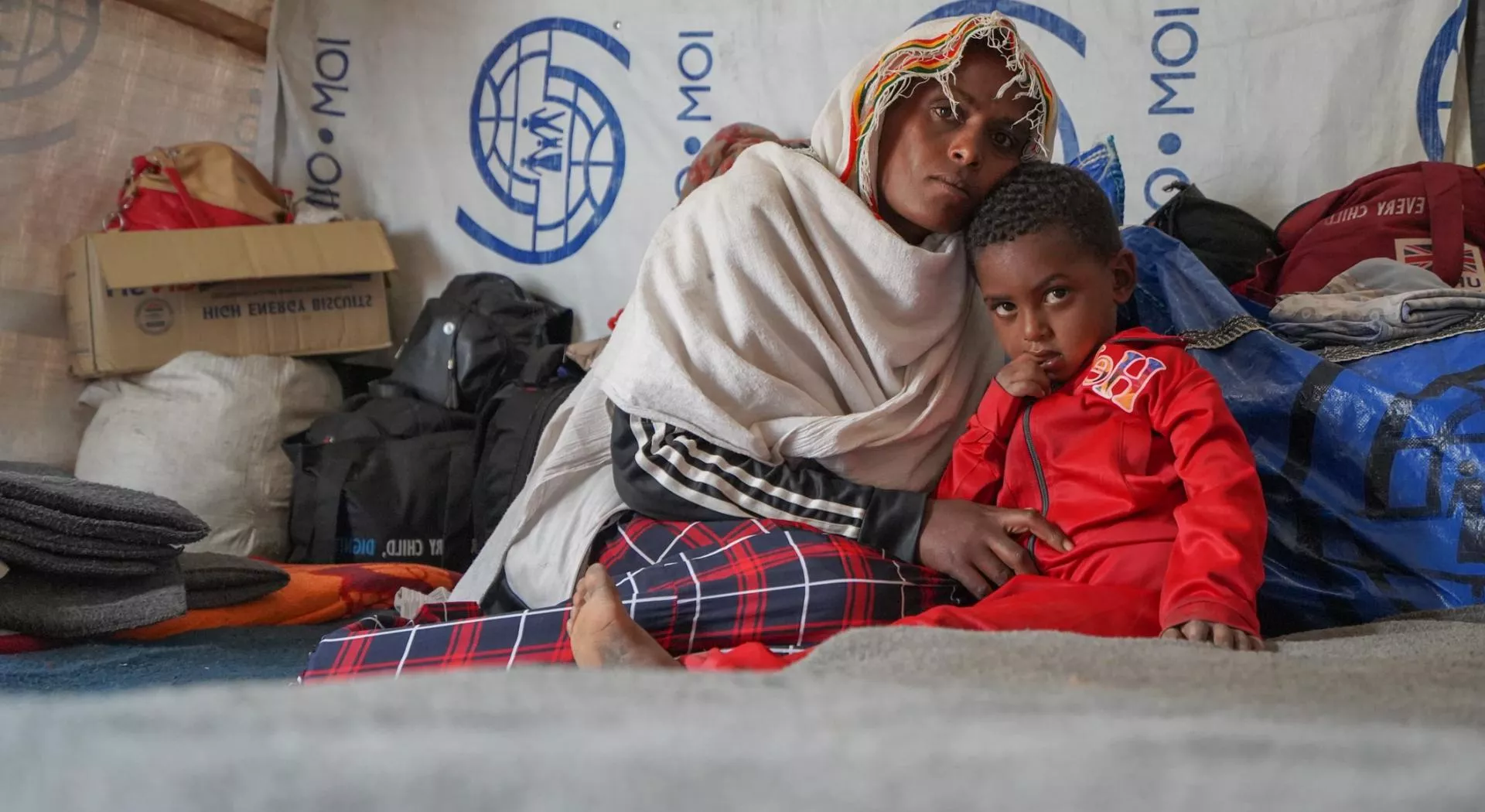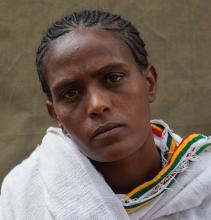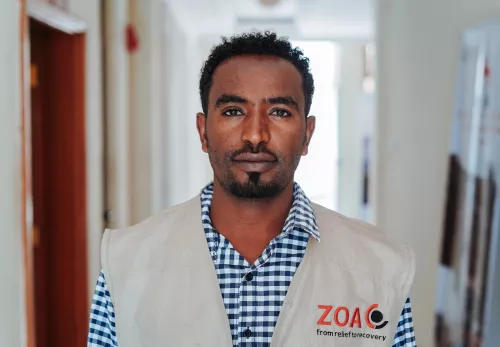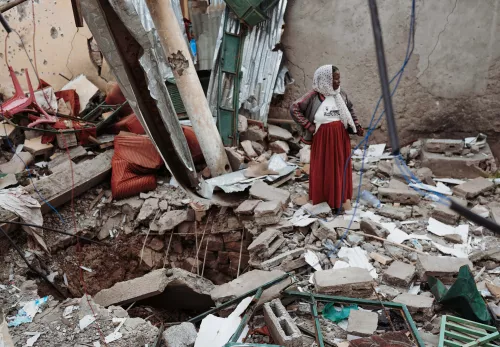Simultaneously, being one of the world's most drought-prone countries, Ethiopia's battle with nature is intense. An ongoing drought that began in late 2020 persists, resulting from five consecutive unsuccessful rainy seasons. This drought has intensely affected pastoralist and agro-pastoralist societies, especially in the eastern and southern regions, intensifying food scarcity, malnutrition, water inaccessibility, and health risks. Some areas, such as the Oromia and Somali regions, are afflicted simultaneously by both drought and conflict.
These humanitarian crises threaten millions. To aid over 20 million individuals nationwide, the 2023 Ethiopia Humanitarian Response Plan (HRP) has called for a budget of US$3.99 billion.
ZOA has been working in Ethiopia since 1994 en maintains its presence across various Ethiopian regions including Amhara (field offices in Woldia and Bahir Dar), Gambella (field office in Gambella Town), Oromia (field office in Harar), Somali (field office in Melkadida refugee camp and Jijiga), Tigray Regional State (field offices in Shire and Mekelle), and two city administrations (Addis Ababa and Dire Dawa).

We are here in Ethiopia
With over 916,000 refugees and an overwhelming 4.6 million internally displaced persons (IDPs), Ethiopia is at the crossroads of recovery and challenge. While the scars of the Tigray conflict, which ended in November 2022, are healing, the nation faces multiple humanitarian crises, impacting countless lives. Ethiopia's vulnerability to climatic shocks, particularly drought and floods, has affected millions. The combination of the Tigray conflict and successive natural disasters have created a complex humanitarian landscape.
ZOA supports refugees, displaced people and returnees
Political instability
Humanitarian needs rise in Ethiopia
The Tigray conflict, which ended in November 2022, has shifted the region into a rehabilitation phase. Yet, the ramifications of the two-year-long conflict are still palpable. Other parts of the country, including Oromia, Gambella, and Amhara, continue to experience or see a surge in conflicts, leading to substantial humanitarian needs and further displacement.
Facts and figures about ZOA's work in Ethiopia in 2022
With a team of 187 staff members we supported 538,880 people.
Addressing root causes behind irregular migration
We can't ignore the substantial influence of irregular migration driven by poor livelihood opportunities. Hence, ZOA offers a combination of solar energy, electricity, briquettes, and income-generating methods. We combine livelihood activities for Eritrean youth with psycho-social support, to help refugees who have suffered from trauma on their journey to Ethiopia. ZOA is also piloting an innovative urban refugee programme to support young talents, refugees and host-communities, to secure employment opportunities in the IT sector in Ethiopia.
Our innovative programs, funded by consortia including the Dutch government, AECID, and the European Union, have been instrumental. We are deeply involved in empowering Ethiopians and young refugees with skills, employment trainings, and job placements. Additionally, ZOA is at the forefront of discussions with the Ethiopian government and the UNHCR concerning the Comprehensive Refugee Reference Framework in Ethiopia, reflecting our strategic approach in areas like out-of-camp policy enhancements and job prospects for refugees.
Our primary focus is to empower those affected by climatic changes or conflicts, enhancing their resilience and supporting sustainable livelihoods.
How ZOA works with refugees and host communities in Gambella
Water, latrines and shelter for internally displaced people
Conflict and natural disasters such as drought and flooding have resulted in an estimated 4,6 million internally displaced people (IDPs). Most people fled empty handed and now live in spontaneous settlements or with host communities in very harsh and basic circumstances. ZOA supports IDPs through the construction of water points and latrines. ZOA also partners with IOM to provide emergency shelter kits. By providing dignity kit to women safety and dignity can be upheld even during times of crises. ZOA also provides emergency seeds, fertilisers and tools to promote food security and livelihood during displacement.
Support for Internally Displaced People (IDPs):
Given the escalation in IDP numbers, our support mechanisms have also evolved. We now aid IDPs with emergency shelters, shelter repair kits, clean water, and toilet facilities. Efforts are also concentrated on ensuring food security for these displaced populations.
Our focus areas have broadened, emphasizing peacebuilding, social cohesion, and education.
Working together
Partners and donors
ZOA has been working in Ethiopia since 1994. Due to our experience and good results, we are valued as partners by the Ethiopian government, the United Nations, and other aid organisations. Moreover, our long-term commitment helps the communities we serve to put their trust in us.
We work together with other local and international organisations including The Leprosy Mission, The Hague Academy, VNGI, African Disability Forum, Ethiopian National Association of People with Leprosy, Federation of Ethiopian Associations of Persons with Disabilities, Development for Peace Organisation. Several government partners such as the Ethiopian Refugees and Returnees Service (RRS), Agency for Civil Societies (ASCO), Ethiopian Disaster Response Management Committee (EDRMC), Regional Governments, Ministry of Women, etc. UN agencies such as UN-OCHA, IOM, UNHCR and WFP. UN led clusters in Shelter & NFI, Agriculture & Livelihood (including Energy), WASH and UN Led networks, i.e. Humanitarian Country Team, National Localisation Working Group, Ethiopian Peacebuilding Network. INGO fora including HINGO Forum, Disability INGO Forum.
Our work is funded by the Dutch Ministry of Foreign Affairs, the Embassy of the Kingdom of the Netherlands, the European Commission, USAID/BHA, IRC, Tear Australia, ZOA Netherlands, ZOA Business Ambassadors, private donors and churches.


Melishew (32) fled from Tigray




